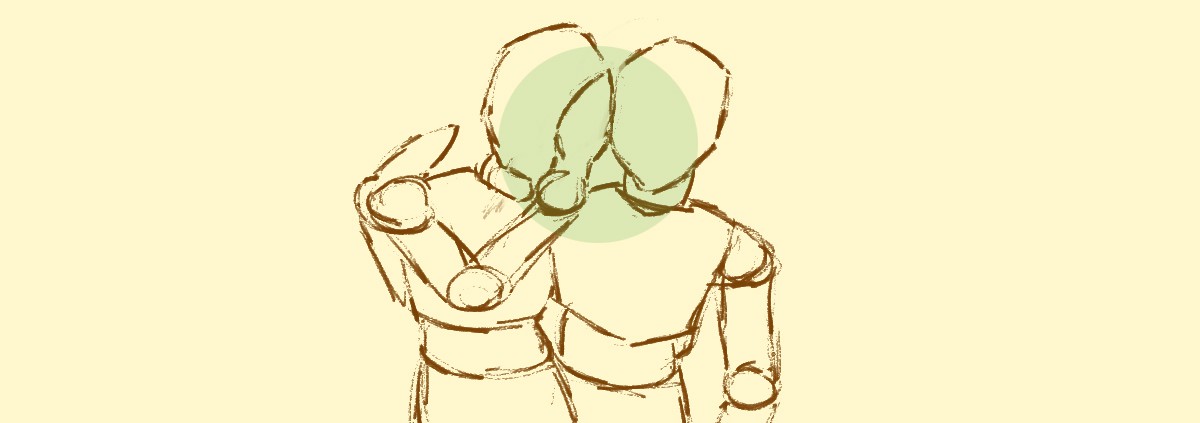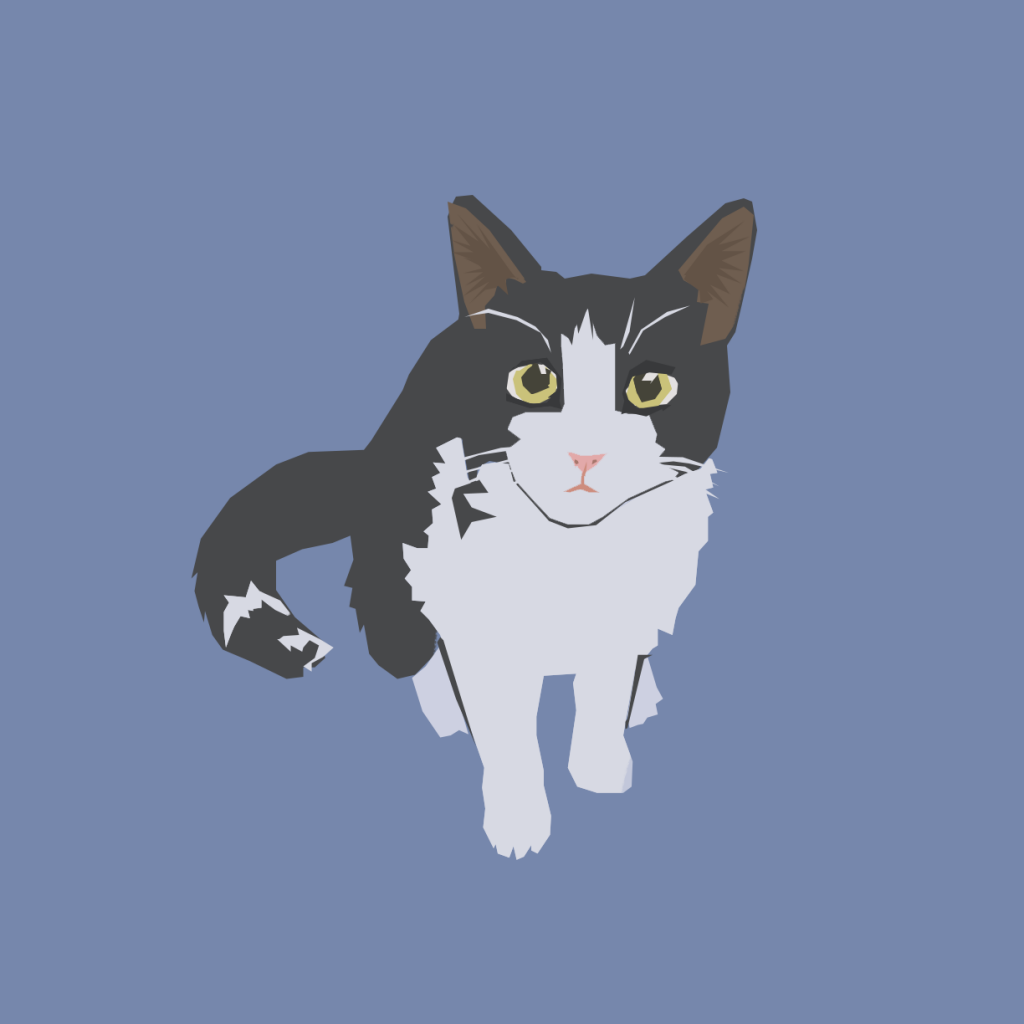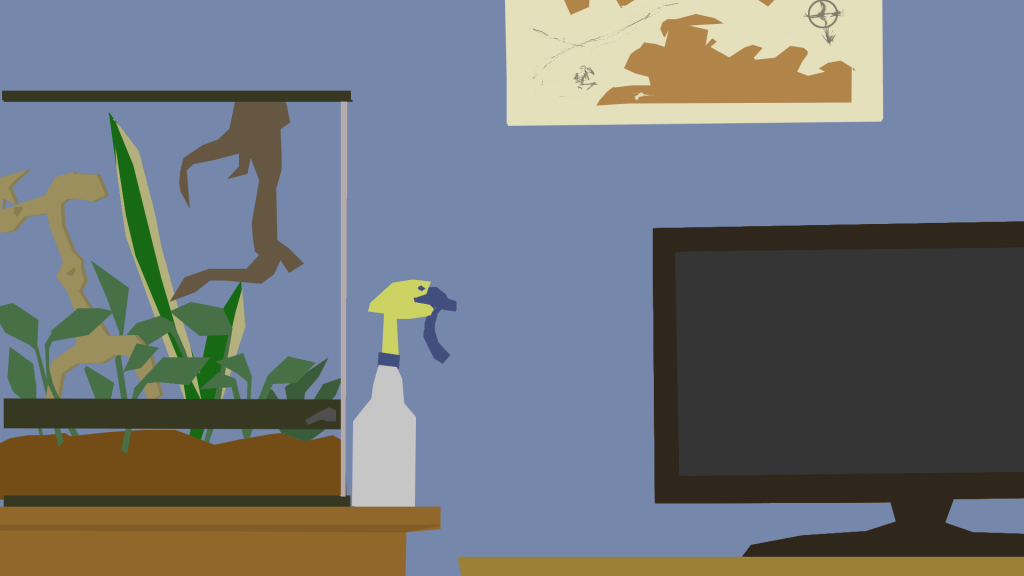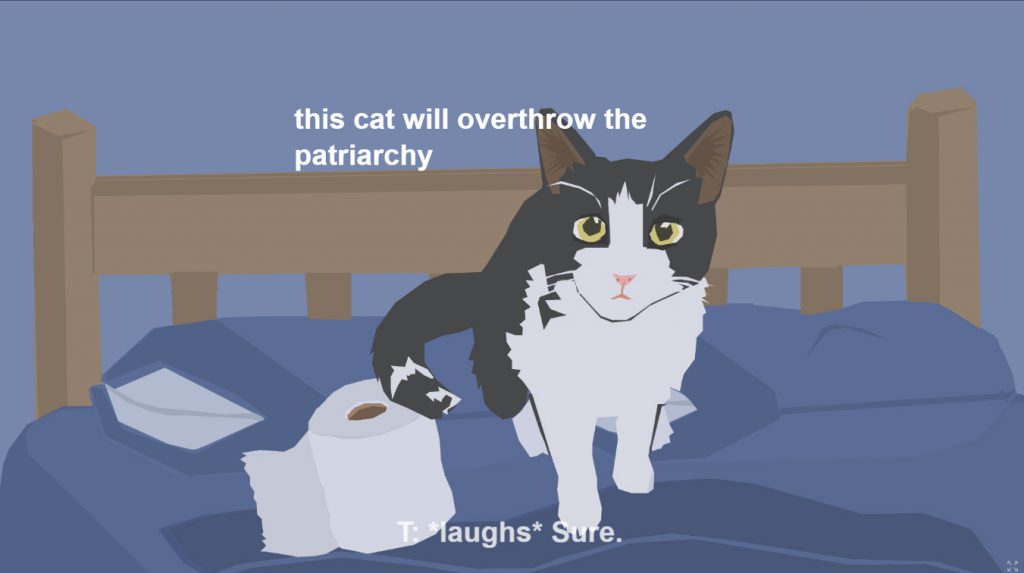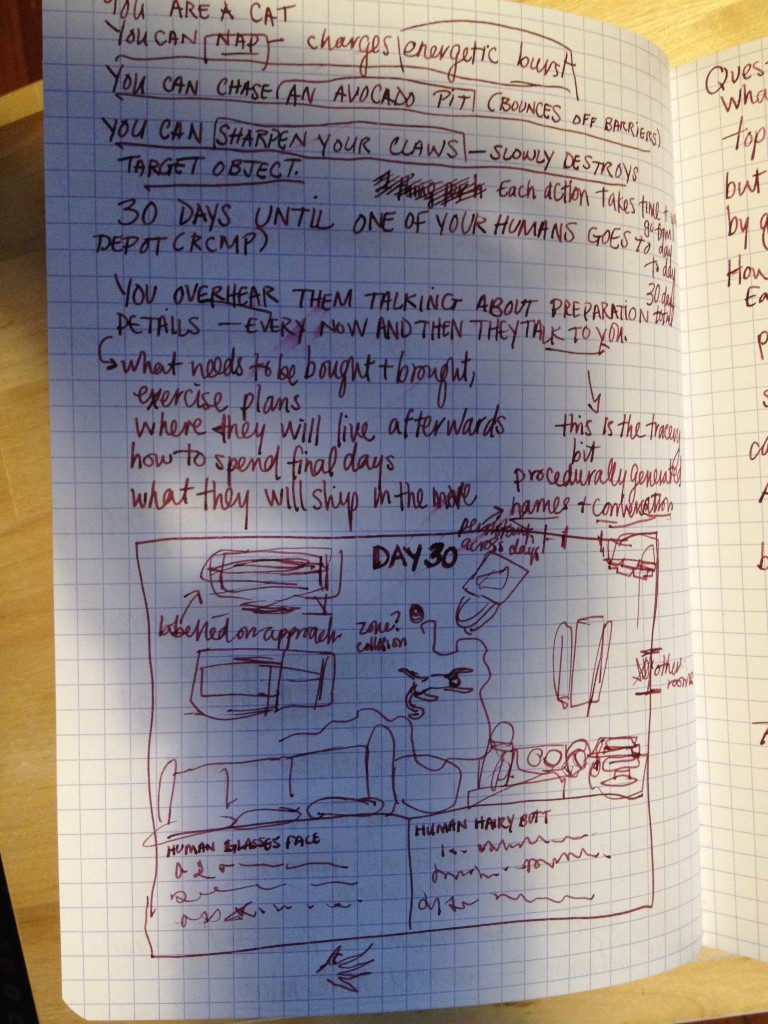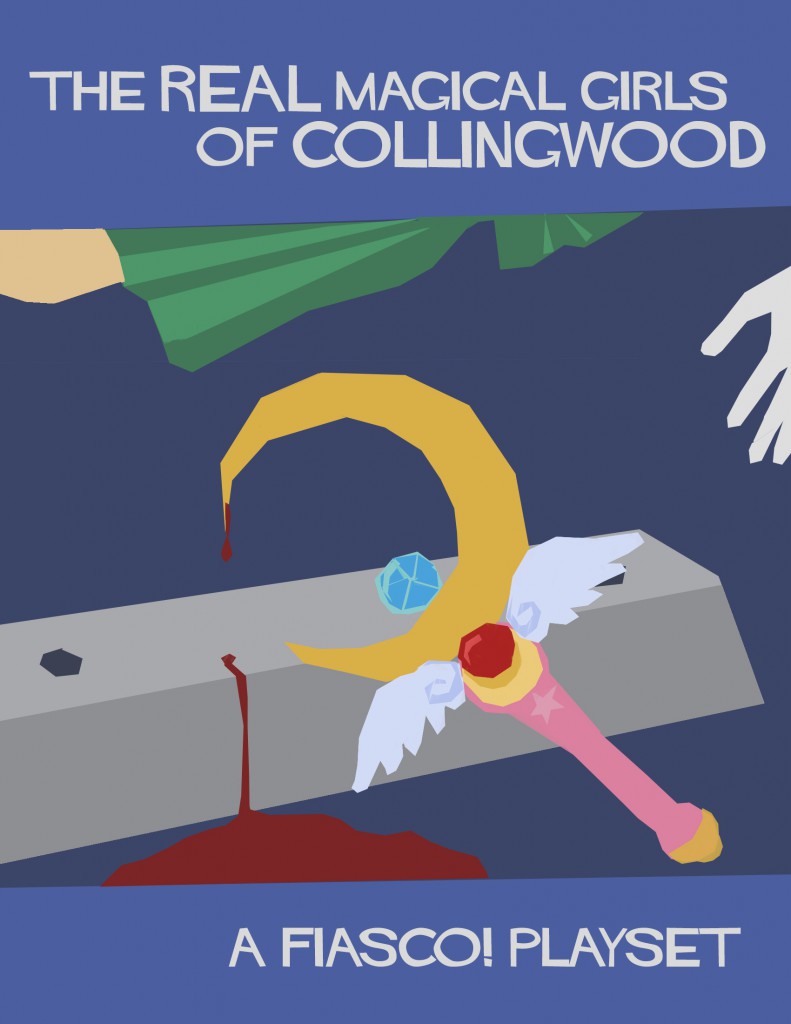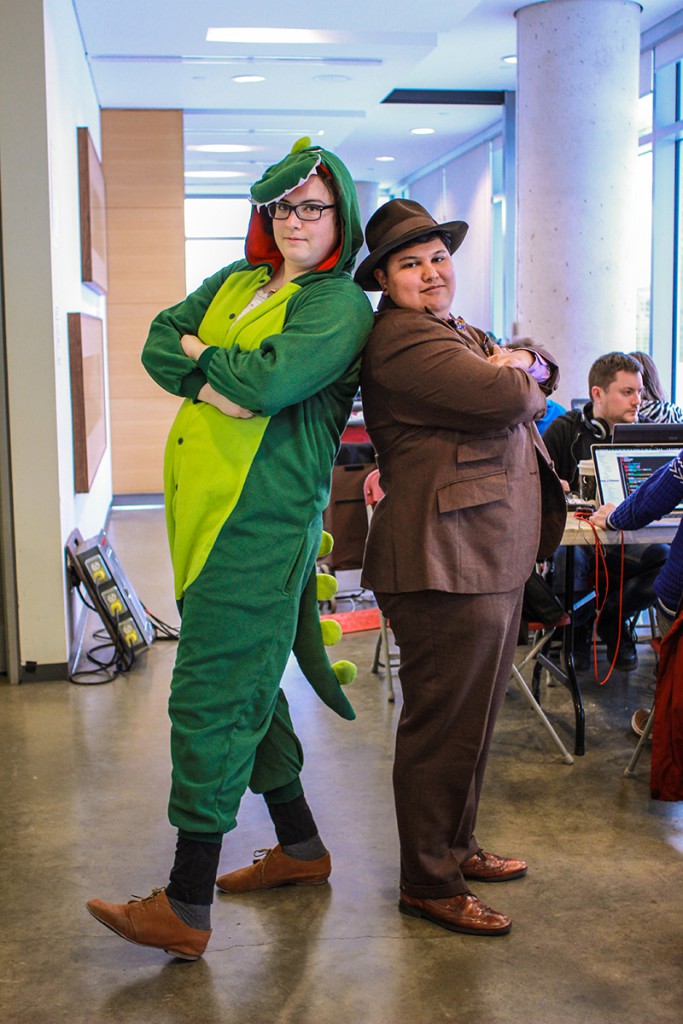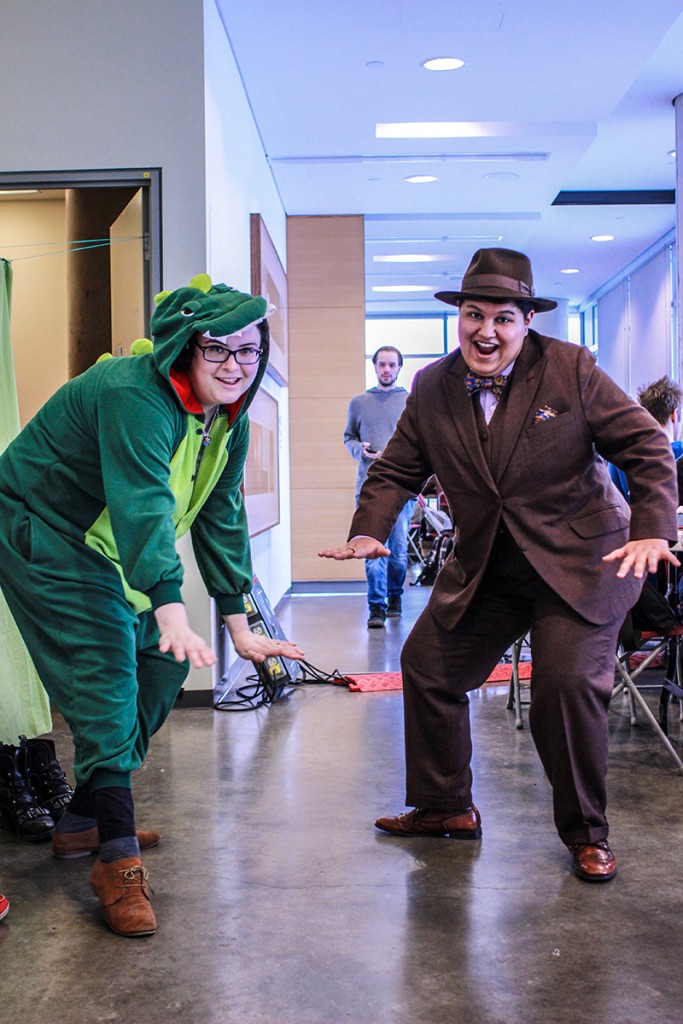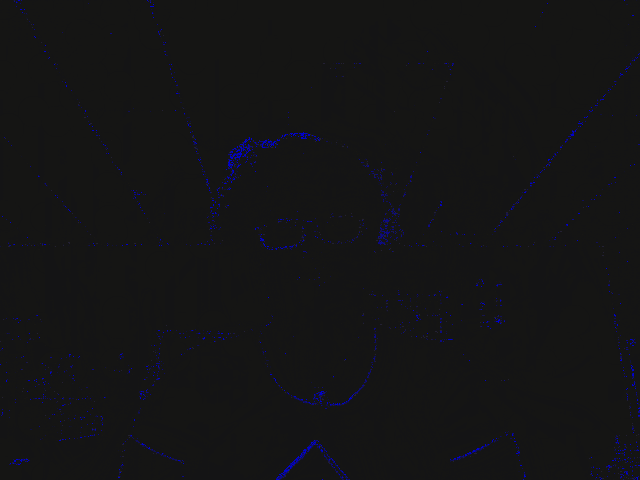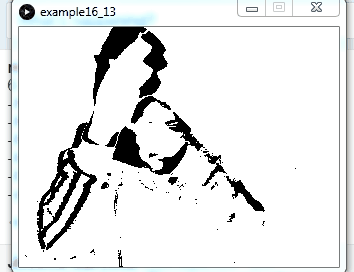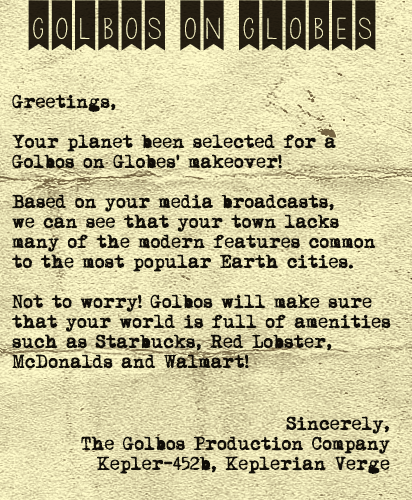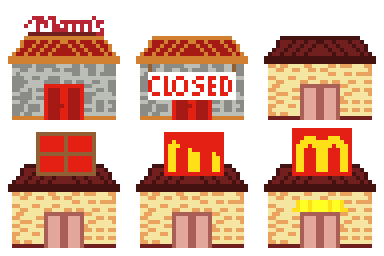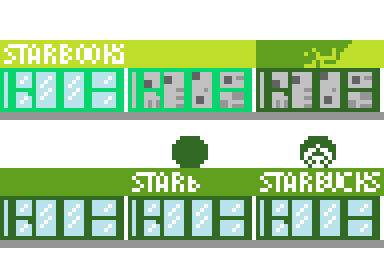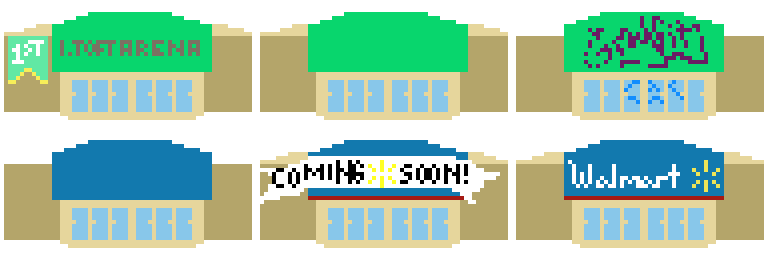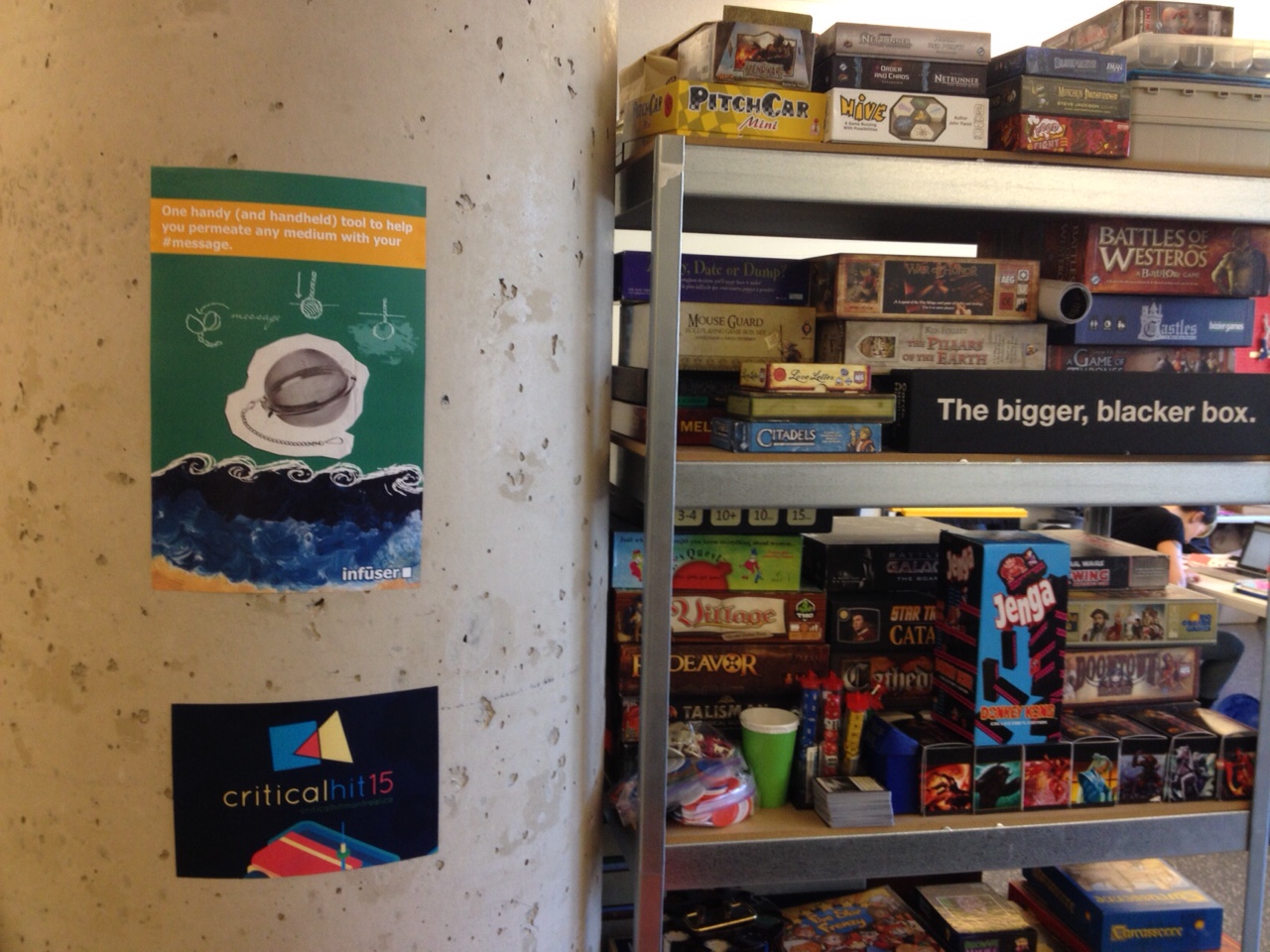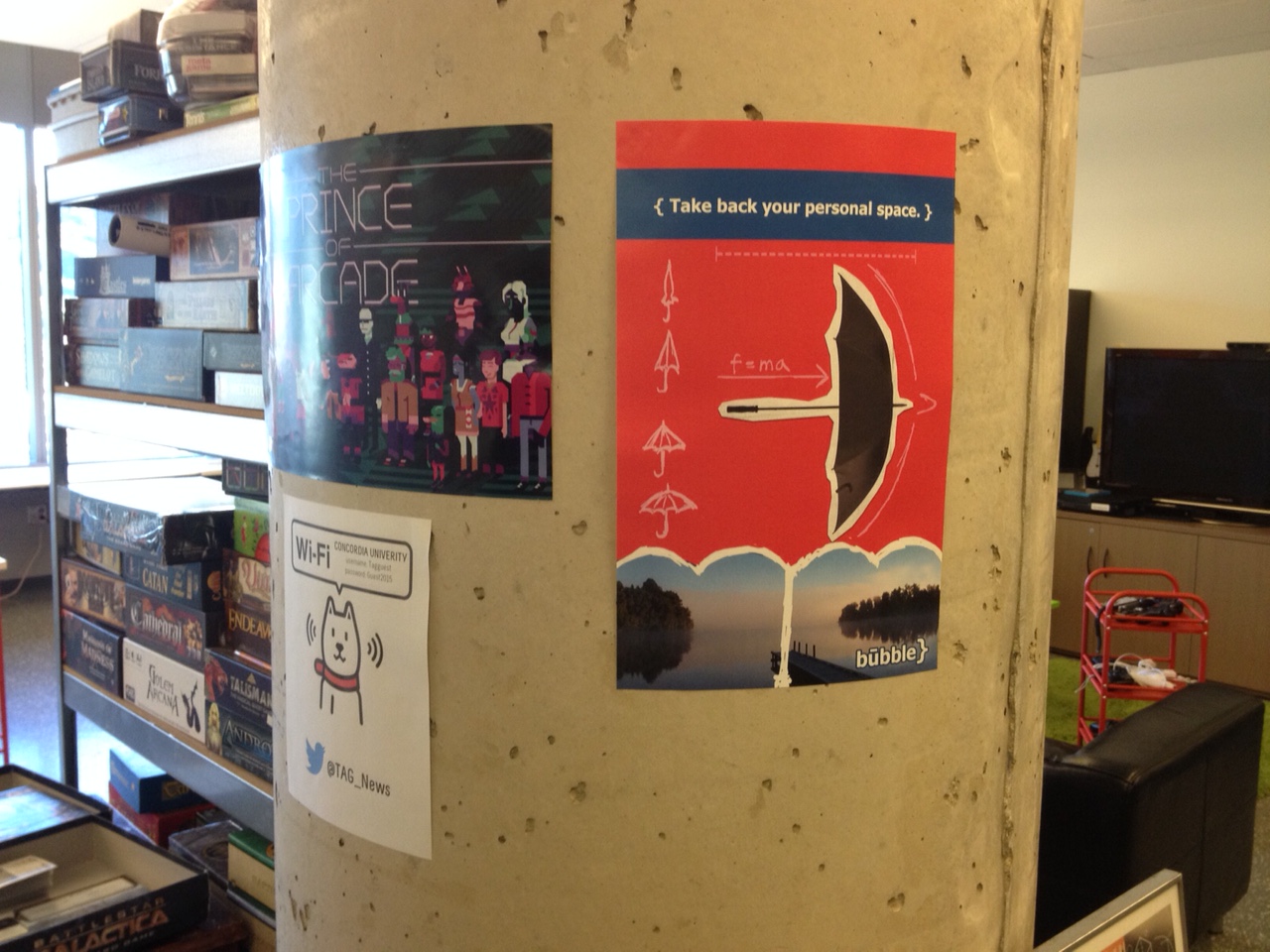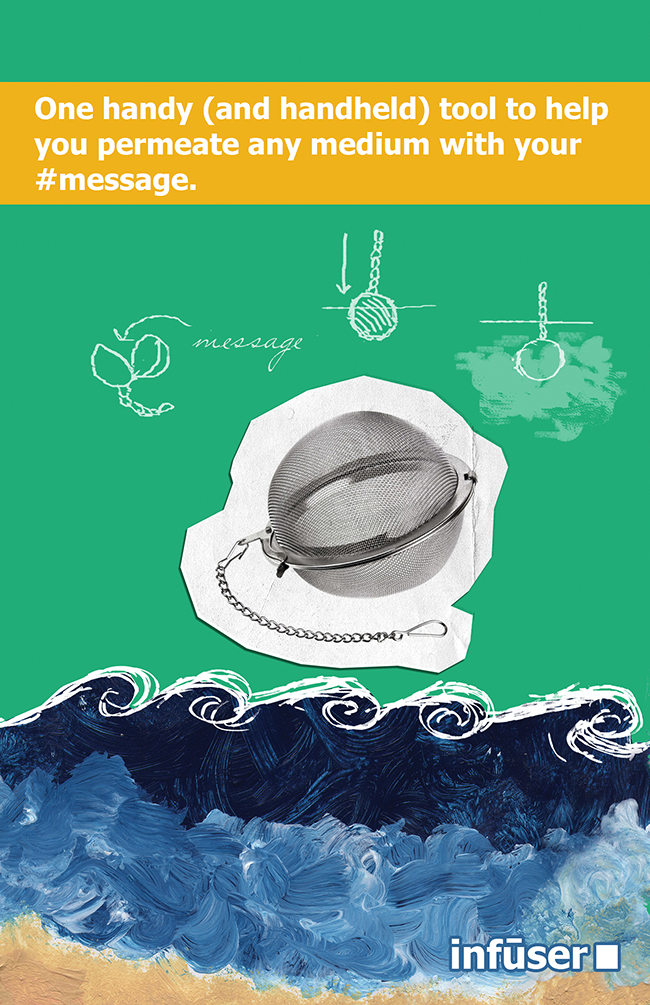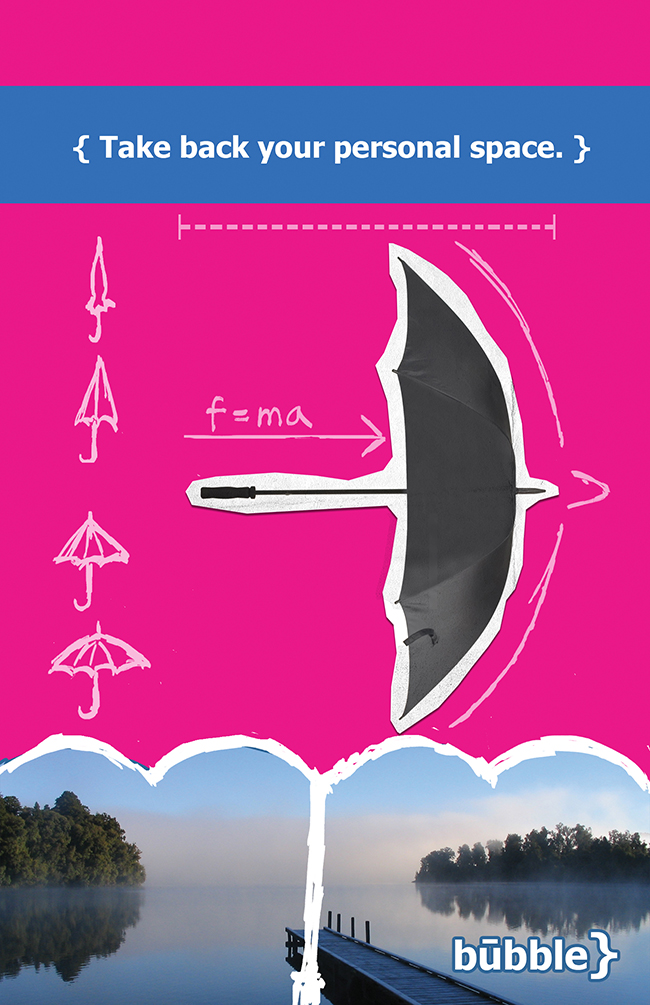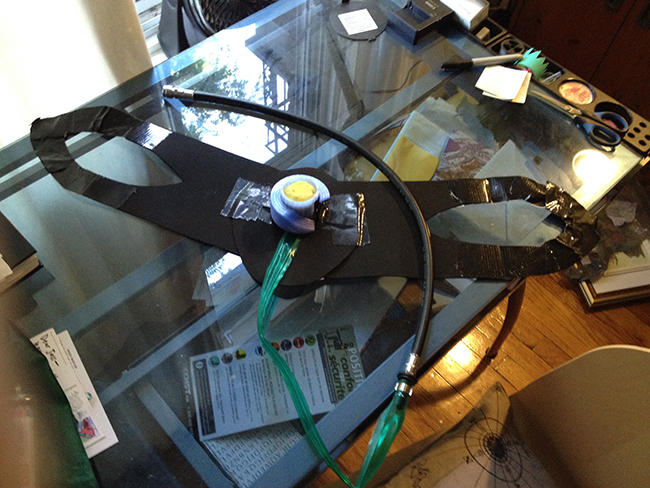[This postmortem was written for Mia Consalvo’s Player Studies class, but I thought you might appreciate reading it as well. You can find the Game Rules, more pictures of player answers, and other context at the-riddle-promenade.tumblr.com — if you like, you can even join in and play!]
POSTMORTEM: The Riddle Promenade
Overall, The Riddle Promenade is a slow game. Getting feedback in time for the postmortem was a challenge because from the day that the game was finished to the time that this postmortem had to be written, there were only two weeks of playtesting. That’s only two riddles on the Promenade. Of course, this slowness was an intentional part of the design. The aspects that I chose to take up in my design of a game for Tom Deliva, my muse, were his love of puzzles, mechanics that test his skills (if cheekily, in the case of photography), and his desire to explore and know the history of the things around him. Additionally, Tom works long hours, and doesn’t have much time to devote to games. He and the other players need time to puzzle out the answer to the riddle and then time to go take their picture. Unfortunately, it still means that I haven’t been able to garner as much feedback from as many playthroughs as I might usually have been able to do with a different style of game.
I have also noticed that, even with a network full of people who play games, it can be difficult to get people to come play a game — particularly for playtest purposes. The people who are playing, with the exception of two people from Twitter, are people that I specifically mentioned the game to, and even then, the pool is very small. At time of writing, there are only seven players who have signed up for the google group (one of the accounts on the google group is the moderator’s email, and another is mine for testing purposes and to make sure emails go through). I suppose that it’s possible that some people are seeing the content without signing up for the official group. I have heard that finding participants for academic studies can be a common problem, especially with no monetary incentives (or, as I’ve seen for certain psychological experiments at Concordia, a Tim Horton’s gift card).
What is exciting about having used a platform like Tumblr that allows for others to discover the game is that some people who happen to be into riddles have discovered and liked posts from the site. My hope is that I’ll continue to get better at writing riddles, and that people will join the game over time. Building a community takes more than two weeks, I guess!
I checked in with my muse, Tom, several times during the two weeks of the playtest (November 29th to December 12th). He had solved the first riddle (#2, since #1 was a test riddle) on the first day — almost immediately after reading it. I, of course, neither confirmed nor denied whether he had the right answer, but he was fairly confident in his answer (and it was in fact the right one). He nevertheless thought that it was a good level of challenge, telling me, “that’s often how riddles are — either you get it in a flash or you have to puzzle it out.” For example, another player told me that they weren’t getting the riddle “at all” and “couldn’t wrap [their] head around it.” Overall, Tom liked the game, and appreciated that it wasn’t overly time-consuming. The first time that we spoke, he had solved Riddle #2, but not yet found a good spot to take his picture. He enjoyed that the game encouraged him to go out and get to know Fort McMurray. His one concern at this point was that he wanted the community aspect – commenting and discussing the photos – to be a key aspect, and worried that the community was still very small. The next time that we talked, he had taken and submitted his first picture. He was a bit exhilarated, and in addition to the picture in response to the actual riddle, he sent me a picture of a walking stick that he had picked up along the way. As it turns out, northern Alberta is pretty flat, and in order to find a vantage point, he had to go to one of the areas hit by the big forest fire in the spring and hike through the burnt-out woods.
When I posted Riddle #3, Tom told me that he again immediately had an answer, but after speaking to him later in the week, I had to hold back from giving him any hints that he, in fact, had the wrong answer. Nevertheless, he submitted a well-considered picture.
A surprise for me as a designer was that, in my head, I thought that our friend group would all want to play this game and share these moments with Tom, but although I shared it with them, initially none of them joined in. Perhaps this has something to do with timing, the end of the semester, and holidays, or perhaps they simply weren’t interested in this style of game. At any rate, this was one aspect of the design that was different than what I had imagined. Tying Tom back to a new online community rather than his existing friend group is not necessarily a bad thing, but it isn’t what was intended — and that community still needs to be built.
Generally, people seemed to like the concept of this game. I received a lot of comments about it from family (my riddle playtesters) and friends (some of whom said they would join but didn’t). Out of those who actually played the game, which included four players other than Tom who signed up for the Google group, and, as a result, had “officially” signed on to play (there were also Tumblr followers), there were mixed reactions that were generally positive. In this small sample of players, only two (Tom and a close friend) submitted an answer for the first riddle. However, after I shared the post with the answers and photographs on social media, a new player (a personal friend) was immediately drawn in. This post also garnered the first player that I didn’t have prior knowledge of, or my first stranger! Perhaps this trend will continue over time. The deadline for answering the second riddle is December 12th, so this assignment was due sooner than the riddle answers. As of now, I’ve received Tom’s answer to the riddle (he has it wrong) and his picture (he took a nice one), but nothing from anyone else.
I wonder if players who did sign up but submitted no picture were just particularly busy during the first week or if one week is too short of a time in which to answer the riddle and take a picture. I suspect that having to go outside to take a picture in inclement weather might also be a barrier — this might be a game that does better in summer. There is of course always the possibility that this game, which Tom is enjoying, really does appeal only to a small subset of people that share Tom’s player profile.
Another disappointment, although I am again hopeful that this may change over time, is that no comments were exchanged about any of the photos, beyond my conversations with Tom. Nobody commented on anyone else’s photograph (as I mentioned, I didn’t receive many submissions), and I thought that this would be easy to get players to do given the platform and that people seem to enjoy posting comments about photos on social media. Maybe I should have actually made this game on Instagram!
Overall, the development of the game went well. I spent most of my time developing the game concept and design. Implementing and testing all the parts only took a few hours, once I had all the design work figured out. The aspect of the game that took the longest amount of time (and it doesn’t really show in the game) was writing riddles. I spent days writing riddles – and in the end, I only had five to show for all that work. Partially, that’s because I wrote a lot of bad riddles as I learned how it was done and hit my stride. I think that riddle-writing is a hard-won skill. It’s part poetry and part puzzle design. Making comparisons that are specific and finding answers that aren’t too broad or too narrow once in riddle form is challenging. Two things that I wanted very badly to write riddles about were a movie theatre and a fire station. With a movie theatre, the riddles tended to be about escapism, absorption and time, but were too general — the answer could have been almost anything that is considered a form of entertainment. With the fire station, the defining features were too specific and my fire station riddles ended up far too easy. Maybe I’ll take another crack at writing riddles about these things once I’m a riddle-writing master. One nice side effect of writing riddles and testing them out (mostly on my family) is that my dad started to text me his own riddle-writing efforts. During my writing process, I would call home, and whoever was there would gather around the phone and listen to my riddle (including extended family). That was fun.
Thinking through how such design exercises might benefit game studies and games, there’s a lot to discuss. I’ll first distinguish between how games as a medium and the games industry might benefit, as compared to how game studies in an academic context might benefit.
In the mainstream game industry, large studios tend to say one thing and do another when it comes to their audience. Ostensibly, they are making games for everyone. However, the same kind of games seem to get made all the time, and given the large amounts of money invested in these games, companies and marketing divisions are understandably but disappointingly risk-averse. Really, most games are already being made for a small, default demographic that we know doesn’t represent “everyone.” So, making games for a micro-audience that isn’t a part of that demographic is an exercise in highly-targeted design that probably won’t change the industry — at any rate, not right away. But it is possible that if designers entering the industry had to perform this kind of exercise with players that are very different than them, it might give them a new perspective. It probably still won’t solve the problem, because such a solution assumes that designers and writers don’t want to make innovative games with new storylines and more diverse characters. Since I have friends who work in the industry, I know that they have to fight very hard for every character and storyline that diverges from best practices.
This kind of exercise does also benefit researchers. Going through the process of making a game when it is not your usual mode of study can be an enlightening way of understanding what that process is like, giving academics a better understanding of the moving parts of games and how they are made because they have had the chance to do it for themselves. For those who already design work as one of their research outputs, normalizing design as a research tool helps to legitimize research-creation (and similar endeavours). Being allowed to submit games as class assignments is helpful in that regard. This is already the kind of work I am doing on my own time, so when classroom work lines up with the work I would like to be doing, I appreciate that. I think everyone who studies games should try making one at least once. As to what muse-based design target to one specific person brings to the table in particular, I think it represents a good, scalable microcosm and can result in clear, targeted feedback. Rather than trying to gather data about whether a sub-group of people liked the game for the reasons that I thought they would, I can ask one specific person and get a (hopefully) clear answer. I think it is a good tool for learning. In my own work, I am interested in figuring out how to describe the creative process for different creators, and formalized and examined exercises related to game design are one way of furthering our knowledge about that topic.
In the end, I am still pleased with how this project turned out. I appreciate that I acquired new skills while completing it (riddle-writing and, well, using Tumblr), My partner appreciated the game that I made for him, and the thought and care that was put into it. I think that I managed to design a game that hits the mark for him in terms of time commitment, easy-access (not a lot of extra hardware is needed except a camera and the ability to visit a website), and directing an experience that goes beyond the computer screen. I also appreciated completing this task as a design exercise, and think that there is a lot to be learned from exercises like this one. As I’ve mentioned before though, I want to take this game further and keep it up and running for longer. The fact that I didn’t manage to get that many people to join and play as part of the initial playtest, and that one of the main mechanics of the game (commenting on each other’s photos to help build community) was not used at all are where the project fell short, and I want to see what happens over time as I try to grow the community. I’ll keep trying for now.
